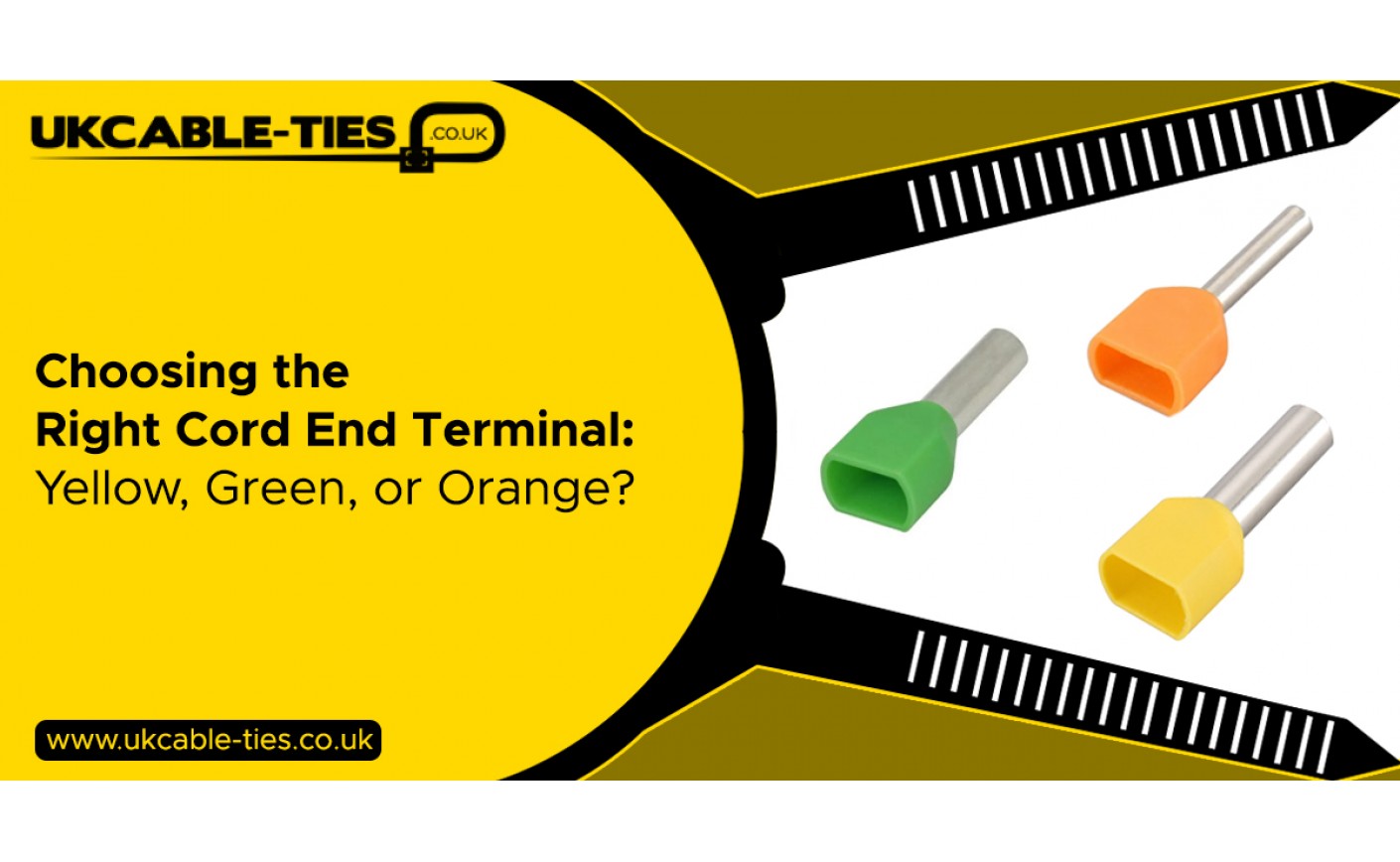Choosing the Right Cord End Terminal: Yellow, Green, or Orange?

When working with electrical wiring and connections, choosing the correct cord end terminal is vital to ensure safety, reliability, and performance. Cord end terminals, also known as bootlace ferrules, are essential components used to terminate the end of a stranded wire and ensure a secure connection within terminal blocks or other connectors. Among the various options available, colour-coded terminals particularly Yellow Cord End Terminals, Green Cord End Terminals, and Orange Cord End Terminals are widely used across multiple industries.
In this blog, we’ll help you understand the purpose of these coloured terminals, where they’re used, and how to choose the right one for your specific electrical project.
What Are Cord End Terminals?
Cord end terminals are small metal sleeves surrounded by coloured plastic insulation. Their primary function is to secure the end of a stranded wire, preventing fraying and ensuring a strong electrical connection. The terminals make it easier to insert the wire into screw terminals or push-in connectors while reducing the risk of electrical faults.
The colour of the terminal’s insulation typically corresponds to the cross-sectional area (CSA) of the wire it is designed to accommodate. This colour-coding makes installation faster and helps maintain wiring standards in professional environments.
Why Is Colour Coding Important?
Colour coding provides a quick visual reference for identifying the size of the terminal and its compatible wire. It ensures:
● Efficient installation
● Reduced errors
● Improved safety
● Compliance with wiring standards
While colour codes can vary slightly between regions or manufacturers, there are commonly accepted norms particularly for colours like yellow, green, and orange.
Understanding the Colour Codes: Yellow, Green, and Orange Cord End Terminals:
Let’s take a deeper look at the three most commonly used cord end terminals and what sets them apart.
1. Yellow Cord End Terminals:
Yellow Cord End Terminals are designed for wires with a larger cross-sectional area, typically in the range of 4.0 mm² to 6.0 mm². They are suitable for heavy-duty applications where a higher current load is expected.
Applications:
● Industrial control panels
● Power distribution systems
● High-load electrical equipment
● Motor connections
Advantages:
● Accommodates thicker wires
● Provides a secure, robust connection
● Minimises resistance in high-current systems
If you’re working on a high-power electrical installation or need to connect heavy-gauge wires to a terminal block, yellow cord end terminals are your best bet.
2. Green Cord End Terminals:
Green Cord End Terminals are typically used for wires around 2.5 mm² in size. They strike a balance between the smaller and larger terminals, making them ideal for a broad range of medium-power applications.
Applications:
● Commercial lighting systems
● Medium-voltage circuits
● Control panels
● HVAC systems
Advantages:
● Suitable for a wide range of wiring tasks
● Easy to identify during installations
● Provides secure connections in medium-current environments
For projects that don't involve extreme current but still demand durable and safe connections, Green Cord End Terminals offer an excellent solution.
3. Orange Cord End Terminals:
Orange Cord End Terminals are generally used for smaller wire sizes around 0.75 mm² to 1.0 mm², making them ideal for low-voltage and signal wiring. They are frequently used in electronic and automation systems where precision and reliability are essential.
Applications:
● Signal cables
● Control wiring
● Electronics
● Low-voltage lighting
Advantages:
● Excellent for compact spaces
● Reduces wire fraying in small conductors
● Ideal for delicate or precision applications
Orange Cord End Terminals are perfect when working with thinner wires where maintaining signal integrity and preventing shorts is critical.
How to Choose the Right Cord End Terminal?
When selecting between Yellow Cord End Terminals, Green Cord End Terminals, and Orange Cord End Terminals, consider the following factors:
1. Wire Size:
The wire’s cross-sectional area is the most important factor. Use a wire gauge chart or consult the manufacturer’s specifications to find the right terminal size.
2. Current Load:
Different applications require different current-handling capabilities. For higher currents, opt for Yellow Cord End Terminals, and for lighter, low-voltage work, choose Orange Cord End Terminals.
3. Environment:
Consider the environmental factors such as temperature, moisture, and vibration. Ensure the terminal’s insulation and sleeve are suitable for the specific conditions.
4. Industry Standards:
Adhering to BS, DIN, or IEC standards helps maintain consistency and safety in professional installations.
Benefits of Using Cord End Terminals:
Cord end terminals, regardless of colour, offer several benefits:
● Improved connection security – No loose or frayed wires.
● Simplified maintenance – Easy identification and troubleshooting.
● Reduced installation time – Colour-coding speeds up the process.
● Compliance – Ensures your work adheres to professional electrical standards.
Why Buy from UK Cable Ties?
At UK Cable Ties, we provide a wide range of Yellow Cord End Terminals, Green Cord End Terminals, and Orange Cord End Terminals, manufactured to the highest standards. We offer:
● Durable, high-quality ferrules
● Competitive pricing for bulk orders
● Fast UK-wide shipping
● Expert customer support to help you choose the right product
Whether you're an electrician, installer, or purchasing manager, our terminals ensure that your wiring is safe, compliant, and efficient.
Final Thoughts:
Choosing the right cord end terminal is more than just matching colours—it’s about ensuring that your connections are safe, strong, and suited to the application. Yellow Cord End Terminals are ideal for high-load tasks, Green Cord End Terminals for medium-range applications, and Orange Cord End Terminals for low-voltage or signal-level projects.
By understanding the differences between these coloured terminals, you can make informed choices that enhance the safety and durability of your electrical systems.

